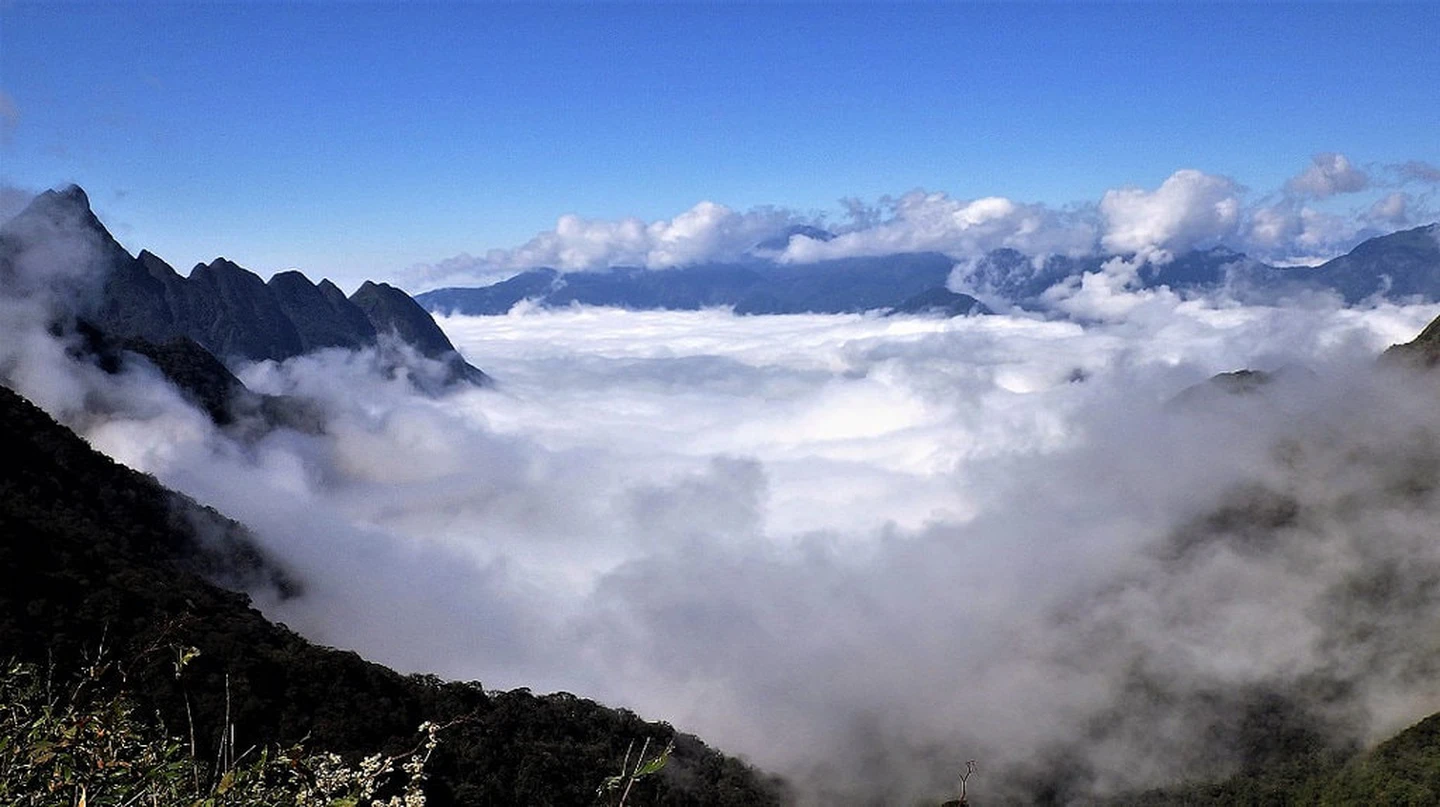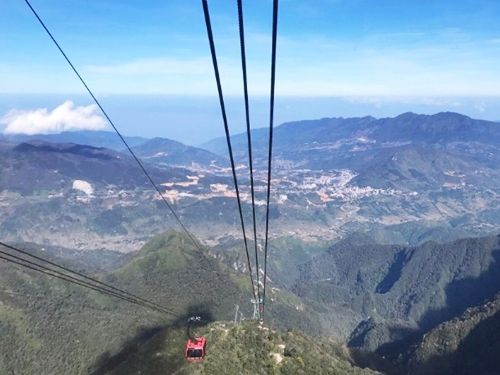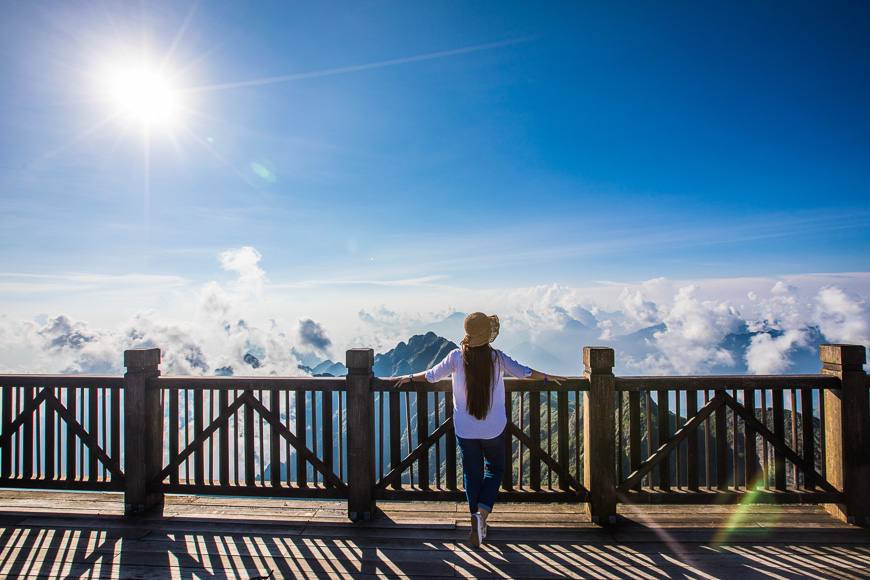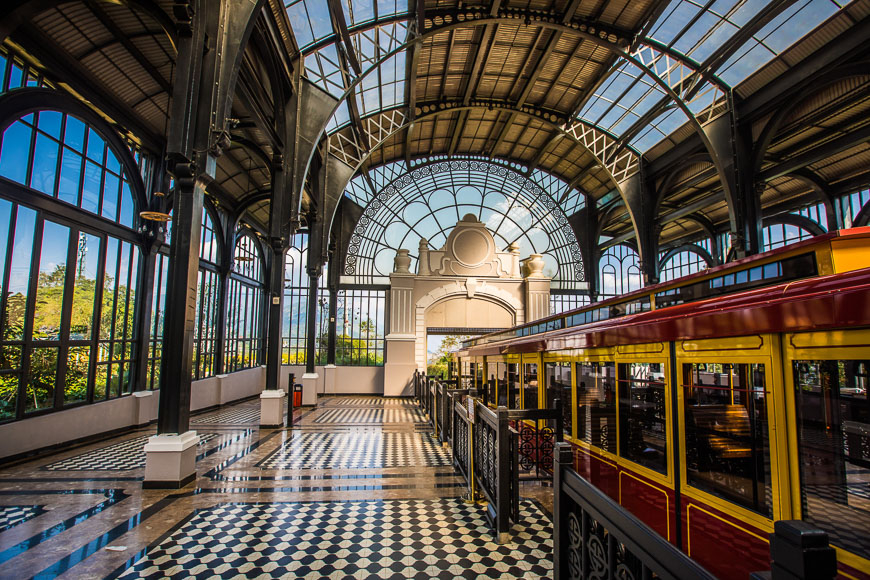Fansipan Mountain or Phan Xi Păng in Vietnamese is the place that shouldn’t be missed when visiting Sapa, the famous town in northern Vietnam. Fansipan Mountain is often called “The roof of Indochina” as with the height of 3,143 meters (10,312 feet) above sea level, Fansipan Mountain is the highest peak in Vietnam, Cambodia and Laos combined.
In the past, the only option to get to the summit of the mountain was by trekking and it could take 2-3 days to make all the way to the top. But nowadays, thanks to the Sunworld Fansipan Legend cable car system, tourists can easily take a cable car and enjoy a 15-20 minutes ride to the top of Fansipan.
Where is Fansipan mountain located?
 |
| Mount Fansipan | © Jan Kozlowski / Flickr |
Fansipan Mountain is the highest mountain in Vietnam and Indochina peninsula, located in the Hoang Lien Son mountain range. The mountain is located about 9 kilometers southwest of Sapa.
How can you get to Fansipan Peak?
To make it clear about how to go up to the top of the Fansipan Mountain by a cable car, let’s start the journey from Sapa town. Traveling from Sapa town to Fansipan Mountain Peak by a cable car consists of 3 parts.
1.Traveling to Sapa Cable Car Station
 |
| Photo: Thaiest |
The first destination you need to reach is Sapa Cable Car Station, also known as Hoang Lien station. The station is located in a touristy place called Sunworld Fansipan Legend, which is about 3 km away from the center of Sapa town.
There are several ways to travel from Sapa town to Sapa Cable Car Station:
By Taxi
Taking a taxi is a convenient way for getting to Sapa Cable Car Station because you can start your journey from your any hotel you are staying at. The trip by a taxi from Sapa town to Sapa Cable Car Station can take 10-15 minutes and the taxi fare for such a ride should be around 40,000-100,000 dong.
By Train
Another convenient way for getting there that we would recommend is taking the Muong Hoa Monorail. This mountain train runs on an approximately 2 kilometers long rail connecting the center of Sapa town with Sapa Cable Car Station.
The train departs from Sun Plaza shopping mall in the heart of Sapa and it takes only 5 minutes to get to the cable car station. This mountain railway is one of the most beautiful and impressive routes in Vietnam because the train runs through several tunnels and bridges, giving a different view. You can also see the beauty of the Muong Hoa Valley and hill tribe villages.
Walking
 |
| Photo: Vietnam.travel |
If you are traveling on a budget or just want to explore Sapa on foot, you can easily walk to Sapa Cable Car Station. There are many signs along the way so you shouldn’t get lost.
You can start walking from the town center, around the Stone Church, get to Thac Bac Crossroad, then turn left onto Nguyen Chi Thanh Street and walk directly to Fansipan Legend for around 1.7 km.
When should you visit?
Sapa goes through more seasons than the rest of Vietnam does, and it can get really cold up there. There has even been snow. Sapa also has a rainy season like the rest of Vietnam, and you’ll mostly want to avoid visiting then.
The best time to visit is during September to April, when the conditions are ideal. The end of February is when all the flowers along the mountain are in full bloom, creating an even more spectacular picture for you to be a part of. The snowcapped mountains around the end of December and January are also a beautiful sight. It’s up to you to decide if you wish to conquer the mountain during cold weather.
If you are in no mood to take the arduous journey trekking up the mountain, are physically unable to, or if you are strapped for time, you can opt to take the newly built cable car. A two-day journey will be compressed into a matter of 20 minutes. As the cables run from Muong Hoa Valley up to the final station on the mountain, you can enjoy sweeping views of the poetic Sapa town, the gorgeous valleys, and the terraced rice fields without trying to catch your breath. From the last station, there are 600 stairs you have to climb, or again to make it easy, there is a tram system to take you up—ideal for little children, the elderly, and the disabled. Tickets will only cost you about 600,000 dong (26 USD) for both ways for the cable car, and an additional 100,000 dong (4 USD) for the tram.
Why Fansipan is a must-do in Sapa
 |
| Photo: Vietnam.travel |
A stunning starting point
Start your adventure by heading to Hoang Lien Station next to the MGallery Hotel de la Coupole to purchase your tickets for the Muong Hoa Mountain Train. Sit back for the five-minute ride over the valley, taking in spectacular vistas of farms and hamlets below. This funicular railway is the longest of its kind in Vietnam and crosses two tunnels and four viaducts. When the train stops, you’ll be greeted by a field of sunflowers at the Sun World Fansipan Legend Yard.
Serene gardens and pagodas
Before reaching the summit of Mt. Fansipan, you’ll arrive at a peaceful garden complex, with stone paths, ancient Azalea trees and 18 skillfully sculpted bronze statues. These sculptures lead the way to a 20-metre celestial Buddha statue perched on the mountainside — the largest in the country. The gardens and pagodas all around provide a tranquil setting to pause and breathe in the fresh air.
Captivating sights from the summit
 |
| Photo: Vietnam. travel |
A series of stairs or a funicular rail will take you the final leg to the top of Mt. Fansipan. From here, you’ll have the rewarding, unbelievable sight of cloud-covered peaks stretching all the way to the horizon. The highest point is a favourite spot for selfies, but you can walk the entire platform for 360-degree vistas. The cloud formations at the top of Mt. Fansipan change every few seconds, revealing new shapes and scenes as the earth meets the sky.



